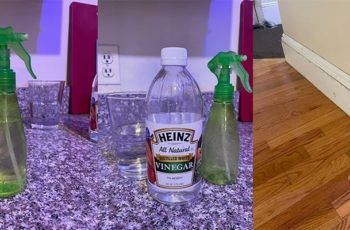Pooping on a leash is not a natural behavior for dogs. Unfortunately, your dog would prefer to have a good sniff around and find the perfect place to go before relieving himself. That’s fine unless you’re in a hurry or it’s pouring rain, and you want to get home quickly to dry off!
So, how can you persuade your pup to poop when you’re out walking him?
Read this article if you don’t know what to do when your dog doesn’t poop on the leash!
Why Won’t My Dog Poop on the Leash?
There are several reasons why dogs are reluctant to go potty while out on walks. Before you can set about solving the problem, you need to understand what’s causing your dog’s anti-pooping behavior in the first place.
Leash Discomfort
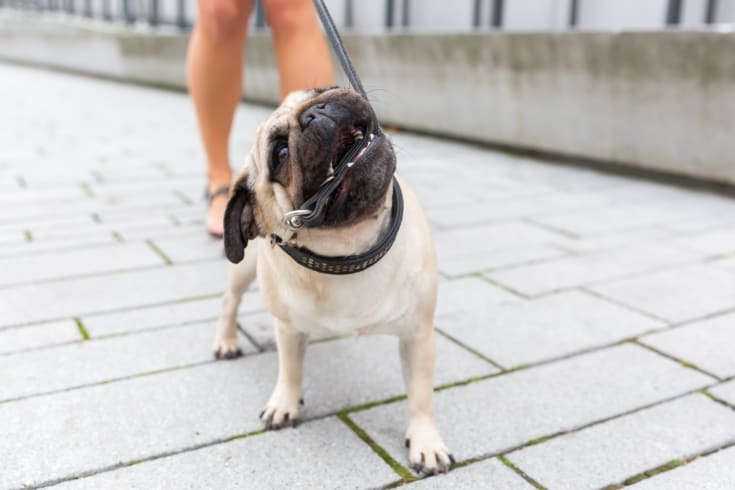
In the early stages of his leash training, walking on a loose leash can be a tricky concept for some pups to understand.
Think about it; your dog suddenly has his movement restricted. That’s perplexing for an animal that has evolved to roam wherever it wants to. So, for dogs that are still learning to walk on a leash and those that have never done so before, going potty while on the leash is an alien concept.
In addition, if a dog tends to pull on his leash and is constantly being corrected, walking won’t be a fun, enjoyable experience. That causes frustration for your dog, making it even less likely that your furry friend will do his business while on his leash.
Limited Exploring Opportunities
While your dog is on his leash, he can’t indulge his natural desire to wander and explore.
Most pups need to check out the area fully before they choose the ideal potty spot. If your dog is kept close to your side for the duration of his walk, he’ll find the lack of personal space extremely challenging and might not go potty at all.
Too Exciting!
Many dogs, especially puppies, find the whole experience of going for a walk incredibly exciting.
Going potty requires a degree of concentration from your pup, and an overexcited dog will struggle with that. If you think about it, your dog will encounter other dogs, new people, and strange sights, sounds, and scents while out on his walk. So, it’s hardly surprising that he won’t remember to poop!
Nervous Dogs
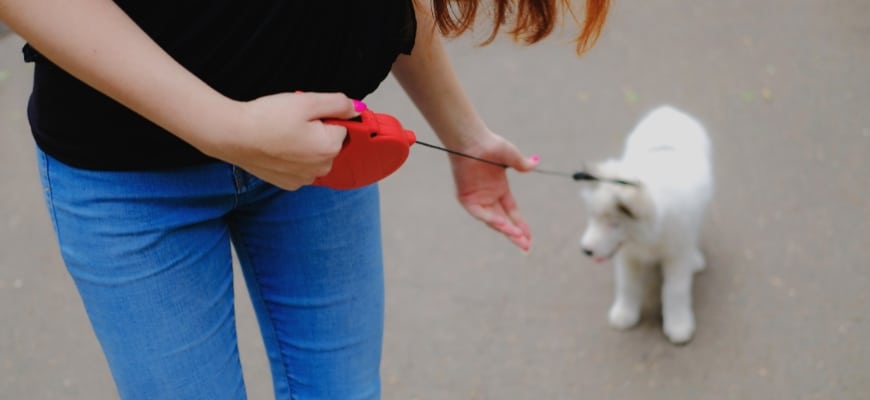
Sometimes, nervous, shy dogs can be too anxious to go potty while out on walks. That’s especially the case if the dog is afraid of traffic, other dogs, and all the everyday things you might encounter while out walking.
Poor Potty Training
If the dog hasn’t been properly potty trained, he won’t understand the concept of going potty while out on walks.
The dog needs to associate a particular, designated outdoor potty spot and might not poop or pee as soon as he touches the grass. Usually, once the dog understands that going outside means an opportunity to pee or poop, he will quickly begin to go potty while out on his leash.
That said, my friend’s dog would only pee or poop at his dedicated potty spot in her backyard. So the pup would typically ask to go outside to go potty before being taken out for a walk!
How to Potty Train Your Dog to Poop on Leash
You’ll be relieved to learn that you can quite easily teach your dog to go potty on a leash.
So, how do you train your dog to go potty while on his leash?
Potty training adult dogs can be challenging. To be successful, you’ll need to have plenty of your dog’s favorite treats on hand, give your dog lots of praise, and be consistent in your on-leash housetraining.
Get Into a Routine
All dogs love to have a routine and are happier for that. A structured daily routine gives your dog security and makes obedience training and establishing other desired behaviors much easier.
A potty routine can help your dog understand the concept of going potty while walking on his leash.
Get started by taking your dog outside on a leash as follows:
- When he wakes up
- After every meal
- After a nap
- When you return home from work
- Before bedtime
If you stick to that routine, your dog will quickly understand that walk time on his leash is potty time. You might find that using a good quality potty training spray outside on your chosen potty spot can be effective.
Establish a Feeding Schedule
Establishing a regular feeding schedule can help your dog to have a regular potty routine. Regular feeding times can also help you to understand when your pup normally needs to relieve himself. Once you know when your dog typically needs to go, you can fit his walking routine around that.
Use a Long Leash
Many dog owners find that providing their dogs with more freedom enables them to select the ideal potty spot. When your dog is on a short leash, he might refuse to go simply because he doesn’t have that choice.
Sometimes, if the dog’s collar feels uncomfortable around his neck, that can distract your dog sufficiently from going potty. We recommend using an escape-proof harness to walk your dog rather than a collar. A harness is much safer and more comfortable for your dog.
If your dog feels more comfortable while out walking, he will be more likely to go potty.
Desensitize Your Dog
Dogs that are easily distracted by sights, scents, and sounds while out walking can benefit from desensitizing. So, you need to find a way of dealing with that reactivity on walks.
For example, if your dog reacts to cyclists while out walking, take him to places where it’s likely that bikes will regularly pass you. Distract your dog with lots of praise, treats, and other forms of positive reinforcement each time a bike passes you.
Increase Your Dog’s Confidence
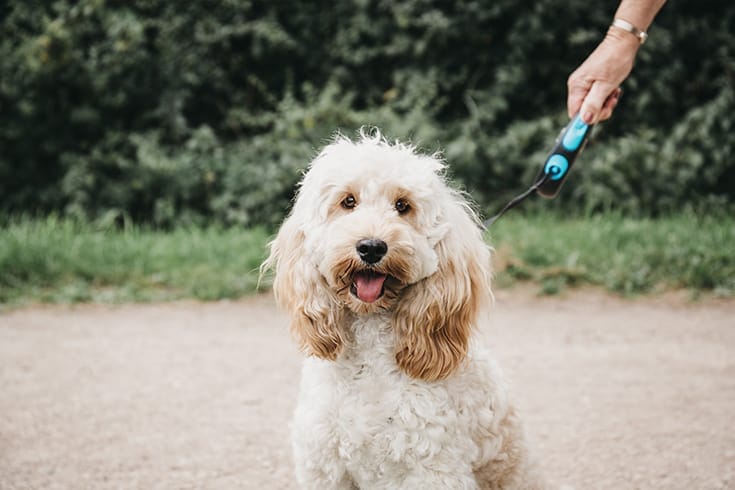
Confident dogs are far more likely to feel happy going potty wherever and whenever they need to while out on the leash. That’s especially crucial for nervous dogs that are fearful while out on walks.
Your dog can be made more confident by teaching him basic obedience, exposing the pup to different environments, and socializing with him. Once your dog feels more confident, he’ll be more likely to go potty while out walking on his leash.
Find a Safe, Secure Potty Spot
A dog can feel pretty vulnerable while relieving himself. Areas where there’s lots of activity can be too noisy and distracting for a dog to feel safe enough to go potty.
Your dog is most likely to feel relaxed, safe, and secure enough on future walks to go to the bathroom in a place where it’s quiet and relatively empty of other dogs, people, and traffic.
FAQs
You’re not alone if your dog is reluctant to poop while on his leash! That’s a problem faced by many dog owners.
Here are a few of the most frequently asked questions by puzzled pet parents!
Q: Why is my dog not pooping on walks?
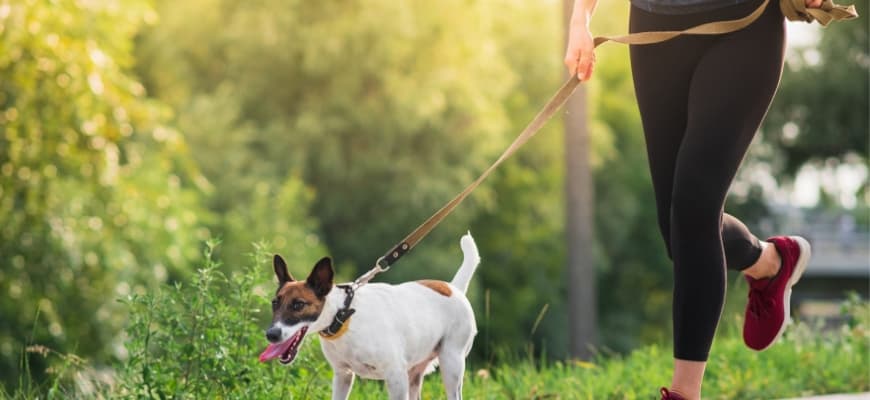
A: There are several reasons why your pup might not poop when he’s out on a walk with you, including:
- Your pup is too excited by everything that’s going on around him. My Cockapoo puppy often forgot to go because she was too distracted by other dogs, passers-by, bicycles, people stopping to pet her, etc.
- Your dog is uncomfortable on his leash.
- A shy dog that experiences anxiety during walks could be too nervous to do his business outside in the open.
- If your dog isn’t properly potty trained, he might struggle with the concept of peeing and pooping on the grass.
- You walk your dog on a standard 6-foot leash rather than a retractable leash, so he doesn’t have sufficient freedom to find a spot where he can poop in private.
Some dogs never get into the habit of relieving themselves while on the leash. However, with reward-based, positive reinforcement training, most pups can be trained to do so.
Q: How long can a dog go without pooping?
A: A dog can sometimes go without pooping for a day or so. In that case, don’t panic! Keep an eye on your pet; if 48 hours elapse without your dog pooping, he might be constipated. In that case, contact your vet for advice.
Q: Should a dog poop on every walk?
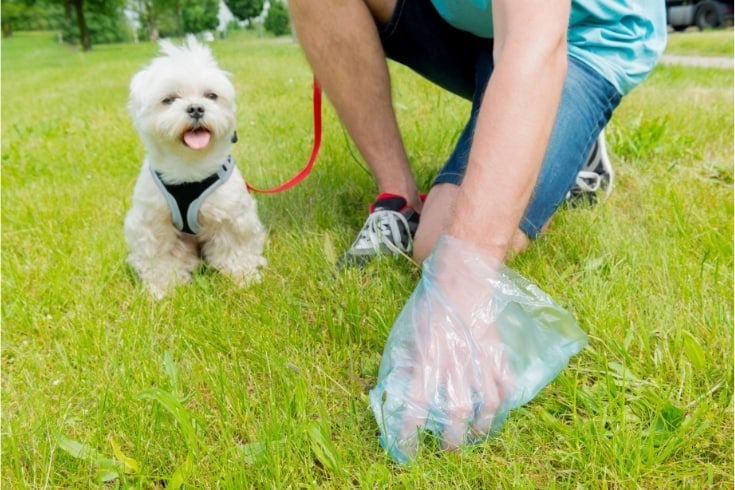
A: Dogs typically need to poop between one and three times every day. So, if you walk your dog twice every day, you can realistically expect him to do his business each time.
However, the frequency of pooping depends on a few factors, including how often your dog eats, how much fiber his diet contains, his health, and his age.
For example, puppies tend to poop more often than older dogs simply because they have more meals.
Q: How often should I take my dog out to poop?
A: Bearing in mind the above, you can expect your dog to need to relieve himself between one and three times every day. Ideally, you should give your pup the opportunity to perform first thing in the morning when he wakes up, after each meal during the daytime, and right before you settle your pet down for the night.
Final Thoughts
So, now you know what to do if your dog won’t poop while he’s on his leash! If you enjoyed the article, please share it!
Often, a dog can be too distracted or excited while out on a walk to go potty. You can help your pup by ensuring he’s properly potty trained and well-socialized so that he feels sufficiently confident to go to the bathroom on a leash.
Establish a regular potty routine to encourage regular bathroom habits, and find a favorite bathroom spot where your dog feels confident.
How did you persuade your pup to poop on the leash? Tell us how you did it in the comments box below!


